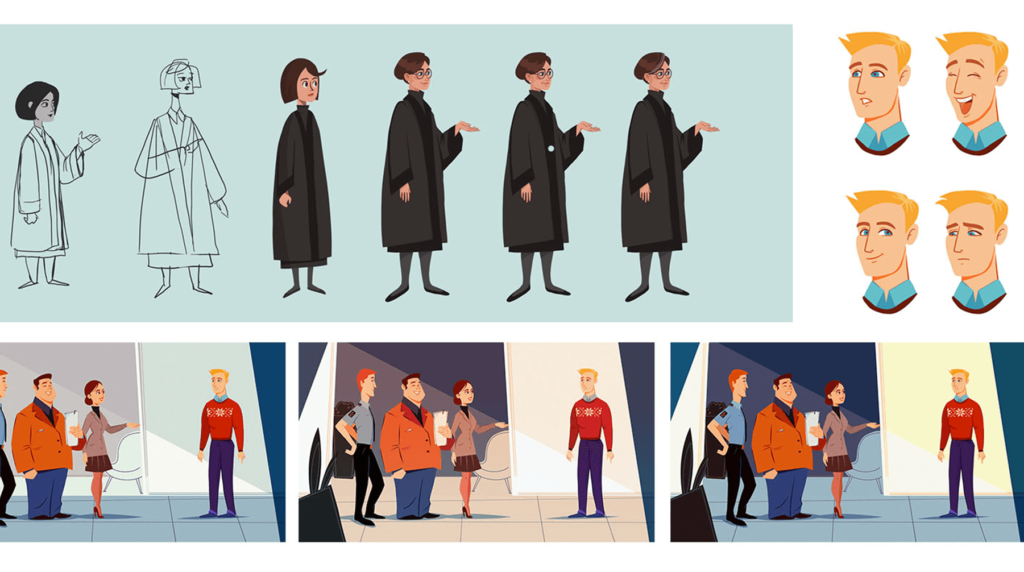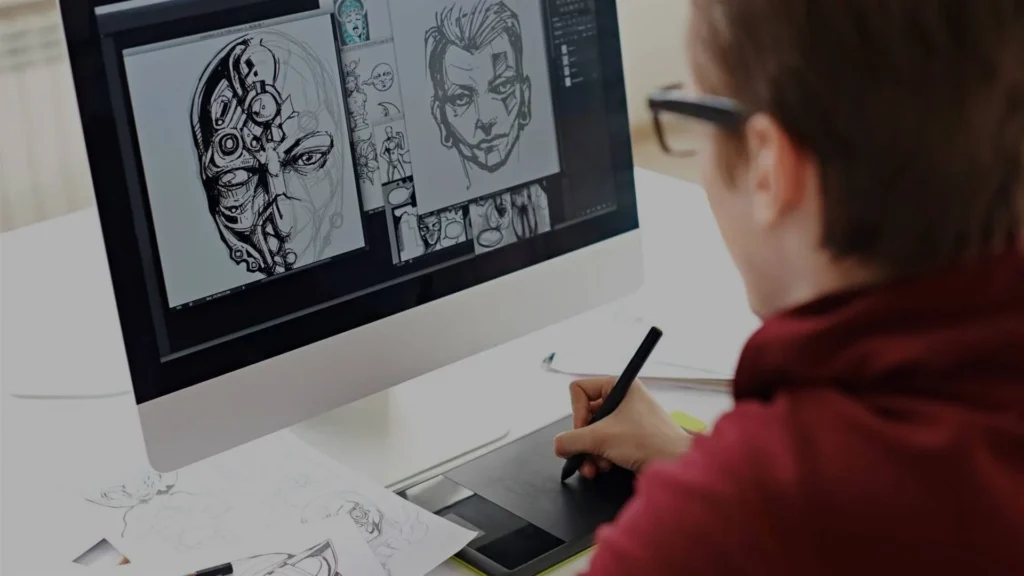Concept art serves as the visual foundation for animation and video games, bridging the gap between initial ideas and the final product. This blog explores the journey of concept art, its significance, and how it evolves from sketches to the screens we enjoy.
What is Concept Art?
Concept art is a form of illustration used to convey ideas for use in films, video games, animation, and other visual media. It encompasses a wide range of styles and techniques, from character designs and environment art to props and vehicles. The primary goal of concept art is to visualize ideas and communicate them effectively to the development team.
The Importance of Concept Art
- Visual Communication: Concept art serves as a universal language among artists, designers, and developers. It helps convey complex ideas and emotions that might be difficult to articulate with words alone.
- Creative Exploration: Artists can experiment with different styles, colors, and designs without the constraints of production. This exploration phase allows for innovation and creativity, leading to unique and engaging visuals.
- Guiding the Production: Once the concept art is approved, it acts as a blueprint for the production team. It guides animators, modelers, and texture artists in creating assets that align with the original vision.
- Setting the Tone: Concept art helps establish the mood and atmosphere of a project. Whether it’s a whimsical animation or a dark, gritty video game, the art sets the stage for the audience’s experience.
The Process of Creating Concept Art
- Research and Inspiration: Artists begin by gathering references and inspiration from various sources, including nature, architecture, fashion, and other media. This research phase is crucial for developing a unique visual style.
- Sketching Ideas: The initial sketches are often rough and exploratory. Artists create multiple iterations of characters, environments, and objects, allowing for a wide range of possibilities.
- Refining Designs: After selecting the most promising sketches, artists refine their designs, focusing on details, proportions, and color palettes. This stage often involves feedback from directors and other team members.
- Final Renderings: Once the designs are approved, artists create polished renderings that showcase the final look of the characters and environments. These high-quality images are used for marketing, presentations, and as references for the production team.
- Collaboration: Concept artists work closely with other departments, such as storyboarding, animation, and game design, to ensure that their vision aligns with the overall project goals.

Concept Art in Animation vs. Video Games
While the core principles of concept art remain the same, the application and focus can differ significantly between animation and video games.
Concept Art in Animation
In animation, concept art primarily focuses on character design, backgrounds, and key scenes that establish the visual narrative. The goal is to create a cohesive look that supports the story and enhances the emotional impact of the animation. Here are some key aspects:
- Character Design: Character concept art is crucial in animation, as it defines the personality, style, and movement of each character. Artists often create turnarounds, showing characters from multiple angles, and expressions to guide animators.
- Background Art: The environments in animated films are equally important. Concept artists design backgrounds that complement the characters and the story, ensuring that the setting feels immersive and engaging.
- Storyboarding: Concept art in animation often overlaps with storyboarding, where artists visualize key scenes and transitions. This helps in planning the flow of the narrative and ensuring that the pacing aligns with the visual style.

Concept Art in Video Games
In video games, concept art serves a slightly different purpose, focusing on gameplay mechanics and player interaction. Here are some unique elements:
- Interactive Design: Concept art for video games must consider how players will interact with the environment and characters. This includes designing user interfaces, character abilities, and environmental elements that enhance gameplay.
- Level Design: Concept artists create layouts and visual guides for game levels, ensuring that they are not only visually appealing but also functional for gameplay. This involves considering player movement, challenges, and objectives.
- Asset Creation: In video games, concept art often leads directly to asset creation. Artists must think about how their designs will be translated into 3D models, textures, and animations, requiring a deep understanding of the technical aspects of game development.
From Sketches to Screens
The journey of concept art in both animation and video games. It highlights the transformative process where initial ideas and sketches evolve into fully realized visual experiences on screen. Here’s a brief overview of this journey:
- Initial Sketches: The process begins with rough sketches that capture the essence of characters, environments, and key scenes. These sketches serve as the foundation for further development.
- Refinement: Artists refine these sketches, adding details, color palettes, and textures. This stage involves feedback from directors and team members to ensure alignment with the project’s vision.
- Final Renderings: Once the designs are approved, artists create polished renderings that showcase the final look. These high-quality images are crucial for marketing and serve as references for the production team.
- Collaboration: Throughout this process, concept artists collaborate with other departments, such as animation and game design, to ensure that the visual elements support the overall narrative and gameplay mechanics.
- Implementation: In animation, the final designs are used to create animated sequences, while in video games, they guide the creation of 3D models and environments, ensuring that the interactive experience is engaging and immersive.

This journey from sketches to screens illustrates the vital role of concept art in bringing creative visions to life, captivating audiences in both animated films and video games.



